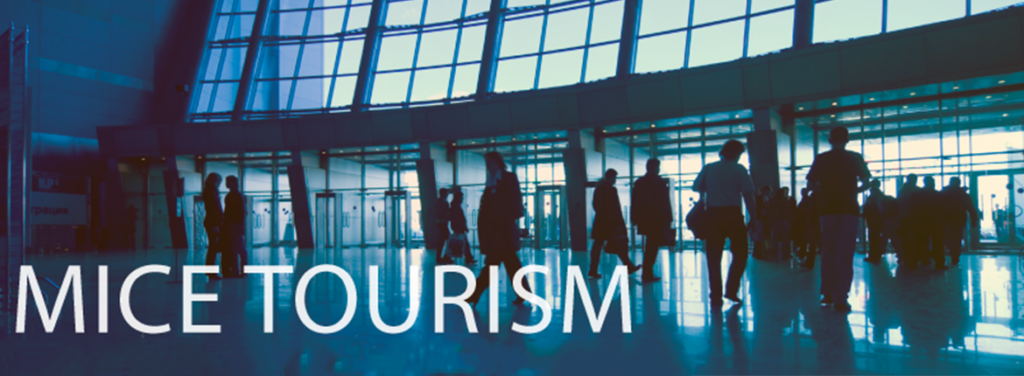Business professionals often travel for meetings, conferences, and events related to their industries. MICE tourism caters to this segment by providing services such as venue selection, event planning, accommodations, transportation, and other logistics to facilitate these business gatherings.

MICE tourism, an acronym for Meetings, Incentives, Conferences, and Exhibitions/Events, constitutes a specialized segment within the broader tourism industry. Unlike conventional leisure travel, MICE tourism is centered around facilitating and organizing business-related events and gatherings.
The primary purpose is to merge professional engagements with travel experiences, offering a platform for individuals and organizations to convene, collaborate, and conduct business in diverse locations around the world.
Key Components of MICE Tourism:
Meetings: This includes small to large-scale business meetings where professionals gather to discuss strategies, share ideas, and make decisions. Meetings can range from internal team discussions to international conferences.
Incentives: Incentive travel involves rewarding employees or clients for achieving specific goals or milestones. Companies often organize incentive trips to motivate and recognize the contributions of their teams.
Conferences: Conferences bring together industry experts, thought leaders, and professionals to share knowledge, insights, and the latest advancements in a particular field. These events may span a few days and cover various topics through keynote speeches, panel discussions, and workshops.
Exhibitions/Events: Trade shows, expos, and exhibitions provide a platform for companies to showcase their products and services. Attendees can explore industry trends, network with potential clients and partners, and gain exposure for their businesses.
Significance and Impact:
Economic Contribution: MICE tourism can significantly contribute to the economic development of a destination. Hosting conferences and events attracts business travelers who spend on accommodations, dining, transportation, and local attractions.
Infrastructure Development: Destinations aiming to attract MICE tourism often invest in developing state-of-the-art conference centers, exhibition halls, and accommodations to meet the specific needs of business travelers.
Networking Opportunities: Professionals attending MICE events have the chance to network with peers, potential clients, and industry leaders. These interactions can lead to collaborations, partnerships, and business opportunities.
Knowledge Exchange: Conferences and meetings foster the exchange of ideas and knowledge. Attendees can stay updated on industry trends, technological advancements, and best practices, contributing to professional development.
Cultural Exchange: MICE tourism allows participants to experience the culture and uniqueness of different locations. This blend of business and leisure enriches the overall travel experience for attendees.
Challenges:
Logistical Complexities: Organizing large-scale events involves intricate logistics, and ensuring smooth operations can be a challenge.
Competition Among Destinations: Various destinations vie for the opportunity to host major events, leading to competition in terms of infrastructure, services, and incentives.
Environmental Concerns: The travel and logistics associated with MICE tourism can contribute to environmental impacts. Sustainable practices are increasingly being emphasized in the industry.
In conclusion, MICE tourism plays a crucial role in the global travel landscape, offering a unique blend of professional development and travel experiences. As businesses continue to expand globally, the demand for well-organized and impactful business events is likely to grow, making MICE tourism an integral and evolving part of the tourism industry.




